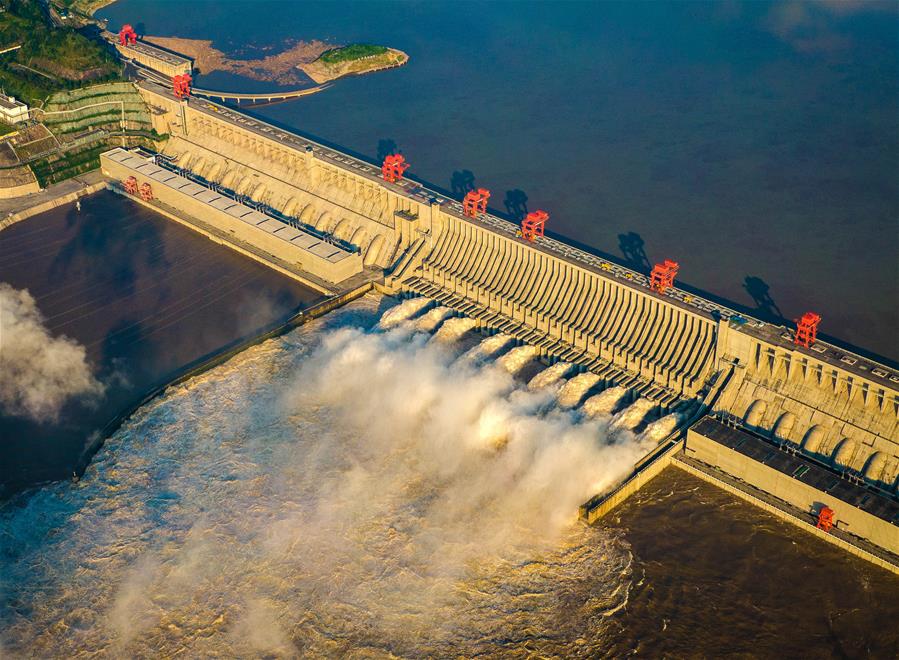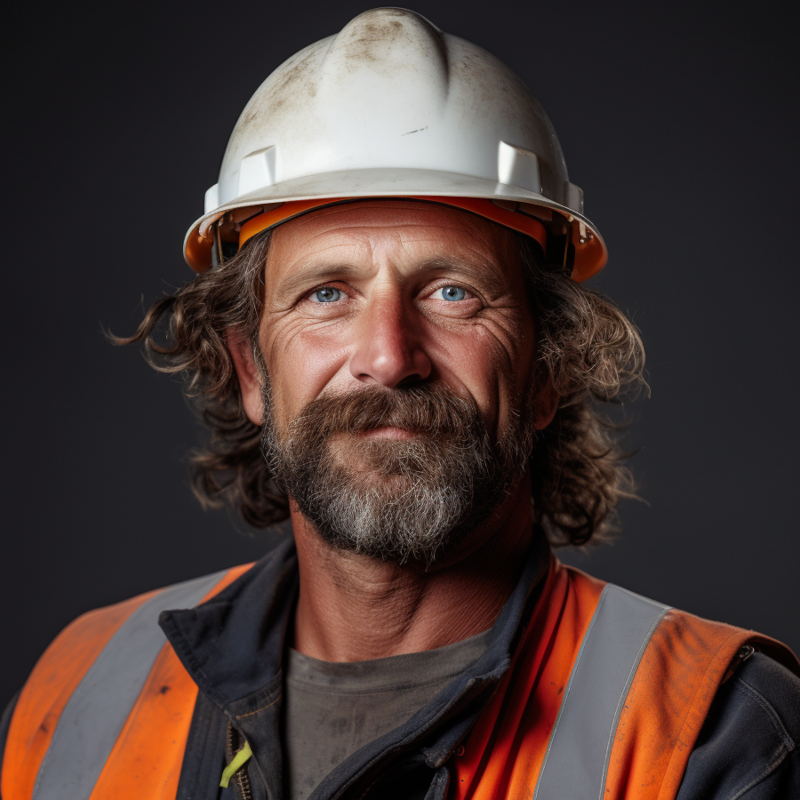


In the grand tapestry of construction, concrete, and mortar emerge as the unsung heroes— the unyielding foundations upon which civilizations rise. From towering skyscrapers to humble abodes, these amalgams of stone, sand, and cement have shaped the architectural landscapes of human history. Let's delve into the fascinating world where science meets craftsmanship, and the alchemy of concrete and mortar builds the foundations of our built environment.
The Solid Pillars of Progress: Concrete as the Cornerstone
Concrete, with its unyielding strength and versatility, stands as the modern cornerstone of construction. The recipe, a symphony of aggregates, water, and cement, undergoes a chemical metamorphosis to create a substance that defies compression and time. From the majestic Roman Pantheon to contemporary skyscrapers, concrete forms the structural backbone that supports the aspirations of architectural ambition.
A Journey Through Time: The Historical Reinvention of Concrete
The story of concrete is a journey through time, with each civilization leaving its mark on the formula. Ancient Romans concocted a precursor using volcanic ash, while modern concrete blended Portland cement with aggregates for enhanced durability. The evolution reflects a continuum of innovation, turning a rudimentary mixture into a substance that has endured the test of centuries.
The Alchemy of Ingredients: Crafting the Perfect Mix
Concrete's strength lies in the meticulous alchemy of its ingredients. Cement, the binding agent, reacts with water to create a matrix that binds aggregates like sand and gravel. The proportions of these components, along with the addition of admixtures, shape the concrete's characteristics. Engineers and builders, akin to alchemists, fine-tune the mix to achieve desired properties such as strength, durability, and workability.
Skyscrapers to Sidewalks: The Universal Utility of Concrete
Concrete's versatility extends across the architectural spectrum. Skyscrapers rise to the heavens, supported by reinforced concrete cores. Highways stretch across landscapes, their foundations anchored in concrete pillars. Sidewalks and bridges owe their durability to this resilient material. The ubiquity of concrete highlights its adaptability and capacity to fulfill the diverse demands of modern infrastructure.
The Bonding Agent: Mortar as the Glue of Masonry
While concrete forms the backbone of structures, mortar serves as the adhesive that binds individual masonry units. Comprising cement, sand, and water, mortar is the unsung hero between bricks, stones, or blocks. Its malleability allows builders to shape intricate patterns, while its strength ensures the structural integrity of walls and facades.
Craftsmanship in the Mix: Mortar for Aesthetic Appeal
Mortar is not merely a utilitarian substance; it is also a canvas for artistic expression. The selection of mortar types and finishes can influence the appearance of masonry. From the rustic charm of exposed mortar joints to the seamless elegance of thin-set mortar in modern designs, the craftsmanship in mortar application enhances the visual appeal of architectural elements.
Reinforced Resilience: The Role of Reinforcement in Concrete
The marriage of concrete and steel reinforcement creates a composite material that capitalizes on their strengths. Reinforced concrete, a stalwart in construction, combines the compressive strength of concrete with the tensile strength of steel. This synergy allows for the creation of structures that withstand not only the forces of gravity but also the unpredictable elements of nature.
Sustainable Solutions: Concrete's Evolution Towards Eco-Friendliness
As sustainability takes center stage, concrete undergoes a renaissance in its environmental impact. Innovations such as recycled aggregates, supplementary cementitious materials, and carbon capture technologies are transforming concrete into a more eco-friendly material. The industry's commitment to reducing its carbon footprint reflects a conscientious effort to balance progress with environmental responsibility.
The world record for the biggest thing that was built from concrete is the Three Gorges Dam, located on the Yangtze River in China. The dam is made of over 28 million cubic meters (37 million cubic yards) of concrete and stands at a height of 181 meters (594 feet) and a length of 2,335 meters (7,661 feet). The construction of the Three Gorges Dam began in 1994 and was completed in 2012, with an estimated cost of around $28 billion USD. It is considered one of the largest construction projects in the world and provides hydroelectric power, flood control, and improved navigation along the Yangtze River.

Concrete and mortar are two common materials used in construction for a variety of purposes, such as building foundations, walls, and structures.
Concrete is a mixture of cement, water, and aggregates, such as sand, gravel, or crushed stone. The mixture is typically poured into forms or molds to create a desired shape and allowed to harden and cure over time. Concrete can be reinforced with steel bars or mesh to increase its strength and durability.
Mortar is a mixture of cement, water, and fine aggregates, such as sand or lime. It is typically used as a bonding agent between bricks, blocks, or stones, and can also be used as a finishing coat for walls. Mortar is applied with a trowel and allowed to harden over time.
Here are some key considerations when working with concrete and mortar:
Mixing: Proper mixing of concrete and mortar is critical for achieving the desired strength and consistency. Follow the manufacturer's instructions and use the correct proportions of materials.
Application: Both concrete and mortar can be applied using a variety of methods, such as pouring, pumping, or troweling. It's important to choose the right application method based on the specific project requirements.
Curing: Proper curing is essential for achieving the desired strength and durability of concrete and mortar. This typically involves keeping the material moist and at a consistent temperature for a specified period of time.
Safety: Concrete and mortar can be hazardous to work with, particularly when inhaling dust or coming into contact with wet materials. Wear appropriate safety equipment, such as goggles, gloves, and respiratory protection.
Quality control: Regular testing and inspection of concrete and mortar are important for ensuring that they meet the required strength and quality standards.
By following best practices and safety guidelines when working with concrete and mortar, you can help ensure that your construction projects are completed safely and to the desired quality standards.
Choosing the right type of concrete or mortar depends on the specific needs of your project. Here are some factors to consider when selecting the appropriate material:
Purpose: What is the purpose of the concrete or mortar? Will it be used for structural purposes, such as building foundations or retaining walls, or for aesthetic purposes, such as decorative walkways or driveways?
Strength: What level of strength is required for the concrete or mortar? The strength of concrete and mortar is typically measured in pounds per square inch (psi). Different projects may require different strength levels, depending on factors such as the weight and load-bearing capacity of the structure.
Climate and environment: Consider the climate and environmental conditions where the concrete or mortar will be used. For example, if the material will be exposed to freezing temperatures, you may need to use a mix with higher air entrainment, which helps to prevent cracking and damage from freeze-thaw cycles.
Type of aggregate: Different types of aggregates, such as sand, gravel, or crushed stone, can affect the strength and appearance of the concrete or mortar. Consider the size and shape of the aggregate, as well as its source and composition.
Application method: The method of application can also affect the type of concrete or mortar you choose. For example, if you're using a pump to apply the material, you may need to use a mix with a specific consistency.
Cost: Finally, consider the cost of the concrete or mortar, as well as any associated delivery or handling fees. While it's important to choose a material that meets your project requirements, you also want to ensure that it fits within your budget.
By considering these factors and consulting with a professional contractor or supplier, you can choose the right type of concrete or mortar for your specific project needs.
Types of concrete:
Normal concrete: This is the most common type of concrete used in construction. It has a compressive strength of 20-40 MPa.
High-strength concrete: This type of concrete has a compressive strength of 60-90 MPa. It is used in high-rise buildings, bridges, and other structures that require high strength.
Lightweight concrete: This concrete has a lower density than normal concrete. It is used in the construction of buildings where weight is a concern.
Self-compacting concrete: This is a special type of concrete that can flow into place and fill all spaces without the need for vibration. It is used in the construction of complex structures.
Types of mortar:
Type N: This is the most common type of mortar used in construction. It is a general-purpose mortar used for bonding bricks and stones.
Type S: This mortar has a higher compressive strength than Type N. It is used in masonry structures that require high strength.
Type M: This mortar has the highest compressive strength of all mortar types. It is used in the construction of structures that require high strength, such as foundations and retaining walls.
Type O: This mortar has a lower compressive strength than Type N. It is used for interior walls and non-load-bearing applications.
The narrative of concrete and mortar is woven into the very fabric of human achievement. From the great architectural marvels of antiquity to the sleek structures of the present, these building materials stand as testaments to the resilience, adaptability, and craftsmanship that define the evolution of construction. Concrete and mortar are not merely substances; they are the silent architects of our cities, shaping the skylines and sidewalks that bear witness to the march of progress.
Sincerely yours,

We use cookies
We use cookies and other tracking technologies to improve your browsing experience on our website, to show you personalized content and targeted ads, to analyze our website traffic, and to understand where our visitors are coming from. Privacy Policy.